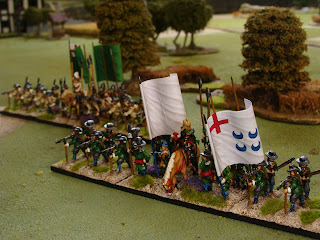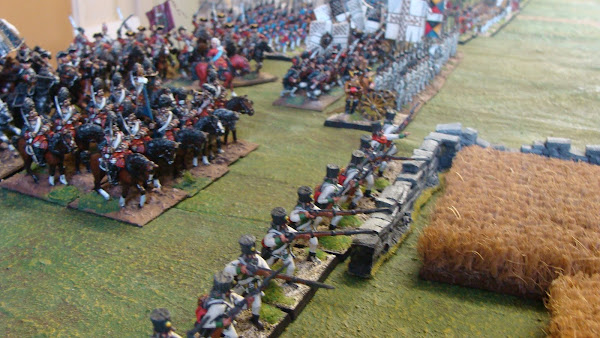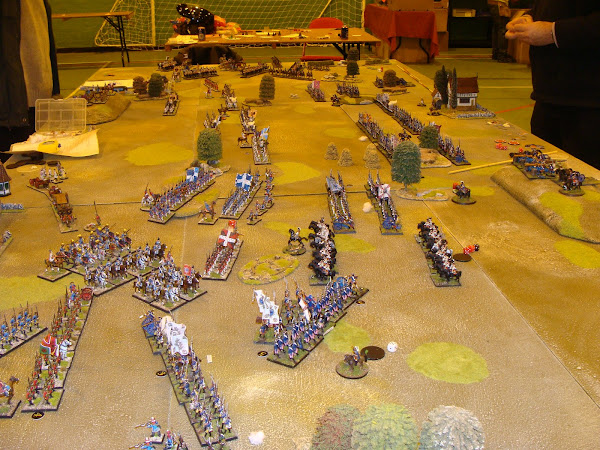I thought it was time to use my part completed ECW project and so delved into my old wargames magazine collection to find a suitable small battle to fight. Using the tenuous link of having a few Stuart Asquith figures I thought it would be nice to use his wargames article as the basis of the game.
Nantwich isnt a big battle and appears a bit one sided, especially if you are the poor royalist foot commander whose cavalry are struggling to find a way to link up with you. I thought it best if I was the Royalist and John took on the role of General Fairfax. We were concerned that if we had used the Pike and Shotte rules that the game would be over in a couple of hours so John tipped up with the Baroque rulebook. It was a very wise choice.
We haven't used the Baroque rules for at least two years and we were a little rusty initially but apart from a couple of mistakes they allowed us to fight a very very enjoyable game. I must admit I always liked the rules but we simply stopped using them, heaven knows why. They are perfect for the period.
The set up was very similar to Asquith's article although because I didnt have a suitable church I replaced that with a large country house.I also added a small beck to slow the rebel advance down. It proved very ineffective.
To represent the garrison at Nantwich sallying out, John was expected to throw a D6 after move six to see if they came. If he threw a six on that move, followed by a five or six on the next etc, they would arrive at the rear of the Royalist infantry. Of course John threw a five which applied the coup de grace to my defeat. I also thought there should be a very slight chance of Byron and the Royalist cavalry turning up, so if I threw a double six they would appear. Of course that never happened.
To start with things seemed to be going well for the Royalists as I advanced to the edge of the country house intending to pour musket power into the advancing rebels. The royalists were pretty effective to start with and for three moves it looked like I would be able to stop the advance of the Parliamentarians.
The issue was always going to be the Parliamentarian cavalry. Yes they were trotters but they could still be very effective when not facing Royalist cavalry.
Initially I managed to disorder the left wing cavalry as they advanced, but by the judicious flanking by the rebel dragoons followed by a charge into my leading Royalist infantry regiment I knew I was in trouble.
I fully expected to stop the cavalry as they charged but Id forgotten about the Baroque rules which allow the opposing player to interrupt the move of their opponent which is exactly what John did. Not only was he able to charge but also managed to disorder my infantry as he fired off his pistols.
Once disordered my infantry were in big trouble although it took three moves to drive them from the field. Of course they weren't intended to take the rear regiment with them which is exactly what happened.
On the other flank John charged into the flank of my artillery which although disordering for him it was very ruinous for me as he systematically rode along my flank before fighting my whitecoated infantry.
It didnt end well for my infantry as they were also disordered prior to taking on the Parliamentarian cavalry.
With the loss of two regiments, the greencoats were left very very exposed.Of course the Nantwich garrison HAD to appear right on cue.
So it was a very decisive victory for Fairfax and seemed to reflect history fairly accurately. Yes the Royalist infantry were up against it but as a spectacle it was good and certainly has encouraged me to keep going with the project. We will definitely be using the Baroque rules again now that we have rediscovered the fun of them and how well they work.
I think I'll make that my new motto..







































































